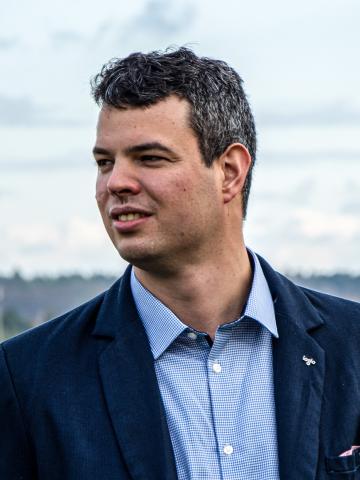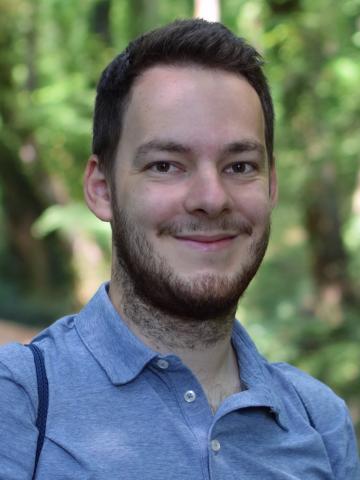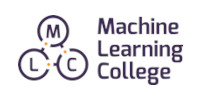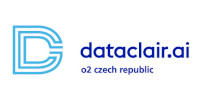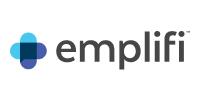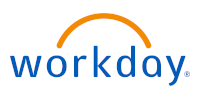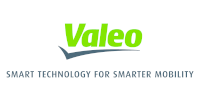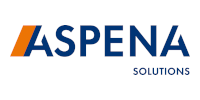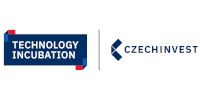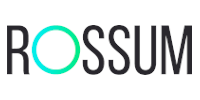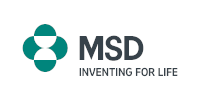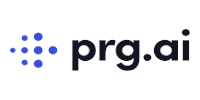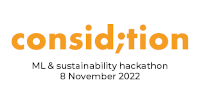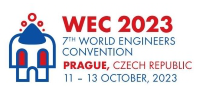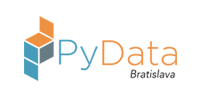The biggest European conference about ML, AI and Deep Learning applications
running in person in Prague and online.
Machine Learning Prague 2023
In cooperation with Kiwi.com
– , 2023
RegistrationWorld class expertise and practical content packed in 3 days!
You can look forward to an excellent lineup of 40 international experts in ML and AI business and academic applications at ML Prague 2023. They will present advanced practical talks, hands-on workshops and other forms of interactive content to you.
What to expect
- 1000+ Attendees
- 3 Days
- 40 Speakers
- 10 Workshops
- 1 Party
Phenomenal Speakers
Practical & Inspiring Program
Friday
Workshops
O2 Universum, Českomoravská 2345/17a, 190 00, Praha (workshops won't be streamed)
Registration –
| Room D2 | Room D3 | Room D4 | Room D6 | Room D7 | |
|---|---|---|---|---|---|
|
–
coffee break – |
Operationalizing Responsible AI in PracticeRoom D2
Mehrnoosh Sameki, Microsoft Are you a data scientist looking to author machine learning solutions responsibly using the latest tooling? Our brand-new Responsible AI dashboard is designed to help you by providing a single pane of glass bringing together a variety of model assessment and responsible decision-making capabilities under one roof. The dashboard enables you to easily assess and validate your models by looking into a variety of model performance fairness and error analysis components interpret your models (including blackbox ones) to understand how they are making their predictions perform perturbations via what-if analysis and counterfactual analysis and understand/fix data imbalance issues. By the end of this session you will have gained hands-on experience in the utilization of these tools and how you can use the outputs to identify diagnose and mitigate your models’ issues and communicate their value to your stakeholders across the organization. |
Learning to Learn: Hands-on Tutorial on Using and Improving Few-Shot Language ModelsRoom D3
Michal Štefánik, Gauss Algorithmic As AI models become an increasingly common element of many applications we more notoriously face practical limitations of specialized models working well only for a single training task and data. Huge language models like OpenAI's GPT-3 showed that models could be much more versatile and adapt to new tasks without updating the model provided only with natural instructions and a small number of input-output examples of the desired task. In practice Few-shot learners can solve your new task with accuracy comparable to the supervised models trained on hundreds to thousands of samples. Our workshop will give you an overview of the existing models able of Few-shot learning including their limitations. We will experiment with creative ways of utilizing in-context Few-shot learning such as customizing the model's predictions to specific users. Finally we will provide some recipes for training Few-shot learners for new languages or further scaling up the accuracy of existing Few-shot models. |
Reproducible, portable, and distributable ML solutions in PythonRoom D4
Stepan Kadlec, ForML When achieved the combination of reproducibility portability and distributability in ML solutions constitutes a powerful faculty unlocking a number of operational opportunities. While reproducibility is a well-established pathway for conducting scientific research it is not always receiving the same recognition within the data product industry. Similarly portability and distributability are typically regarded as irrelevant for bespoke solutions and only pursued in case of explicit demands. This might be reasonable given the extra cost incurred by conventional development; but with modern tooling these properties can be easily achieved without much extra effort. In return this brings significant benefits in the form of highly collaborative R&D inherent lifecycle management effective model troubleshooting carefree and flexible deployment (latency/throughput-optimal runtime modes) and even potential commoditization (market of turnkey solutions). In this workshop we will dive deeper into these concepts examining carefully the available technologies and reviewing some of the existing tools. A significant amount of the time will be spent working with the ForML framework implementing a practical end-to-end ML solution demonstrating all of these declared principles. |
Gaussian process regression when it comes to numerical simulatorsRoom D6
Thomas Browne, Kiwi.com While numerical simulators are often used by heavy industries to model complicated phenomenons their complexity makes them sometimes slow and harder to exploit. Gaussian process regression (GPR) provides an accurate framework where based on a limited amount of calls to the simulator one can have a prediction on any of the simulator's output together with confidence bounds. GPR can then be extended to solve optimization and sensitivity analysis tasks with a parsimonious approach. In this workshop the attendants will be given a walk through the basics of GPR in Python. Besides they will be provided with implemented examples how GPR can help. |
Drug discovery using NLPRoom D7
Aisling O’Sullivan, Dataclair NLP is an important and rapidly growing field. While its application in fields such as language translation and chatbots is well-known the use of NLP in the billion-dollar pharmaceutical industry is less commonly cited. NLP is particularly appealing to drug discovery since these models are capable of capturing complex medical concepts that are difficult for humans to grasp as well as understanding the structure of molecules which are key to discovering novel drugs. In this workshop you will be introduced to the world of using machine learning for drug discovery with a focus on NLP. We'll show you how to apply ML techniques to discover novel drug candidates using NLP on the text and also by applying NLP to the "language of molecules."We will do this through a use-case of classifying molecules that can or cannot cross the blood-brain barrier. This use-case is important for developing drugs that target diseases of the central nervous system (such as Alzheimer's) as well as for identifying potentially toxic drugs. We'll also explain the applicability of these approaches to other important problems such as identifying antibiotics and cancer drugs. |
| – |
|
||||
|
–
coffee break – |
Transform Your Data Game: Mastering Data Modeling and Analytics with dbtRoom D2
Jozef Reginac, STRV Dbt has gained significant traction in the analytics engineering community and is on the quest to become the go-to tool for data teams. With the latest addition Python models it’s becoming relevant even for machine learning engineers. We would like to walk you through the basic project setup the first data model all the way up to creating the Python model. Our goal is for you to be confident in using dbt in your team and to help you merge the work of all data team members into one environment. |
ML with a Large Set of Variables: Feature Selection Techniques for Regression in PythonRoom D3
Aneta Havlínová, Workday In many ML applications we encounter a situation when datasets have a large amount of potential features but relatively few observations—from an analysis of genetics data with thousands of gene expressions through financial data modelling with voluminous data that flows in from capital markets and economies to HR analytics area with extensive data on employees such as their personal information skills job histories and more. In these cases feature selection is crucial to prevent overfitting and to improve model performance. This workshop provides participants with an overview of some of the useful feature selection methods including linear models such as Orthogonal Matching Pursuit or tree-based methods such as Random Forest or Boruta. First a theoretical background is presented. Afterwards the participants are guided step-by-step through implementation of these methods in Python with the practical use-case being tied to the HR data analytics context. |
LIME & SHAP: Explainable AI (xAI)Room D4
Radovan Kavicky, Datacamp In this workshop led by Radovan Kavicky from Datacamp Basecamp.ai and GapData Institute you will get familiar with principles and tools of Explainable AI (xAI) like LIME SHAP and others. Complex modern-day ML algorithms where deep learning and ensemble methods dominate are really hard to fully understand but the decision process behind them can and need to be transparent and trustworthy for decision makers within critical domains as finance healthcare or public sector and governmental services where TRUST is a MUST. In fact with growing regulatory pressure also outside these areas Explainable AI (xAI) will be necessity for any organization soon. You will learn how to understand the inner workings of these ML algorithms and how to design systems that imitate intelligence in a transparent way. You will also get an overview of current trends in Explainable AI/ML and the challenges that are ahead of us. |
Bayesian Networks in business planning and risk managementRoom D6
Martin Plajner, Logio Explore with us a complex and powerful family of models Bayesian Networks. In our workshop you will have a chance to i) understand the Bayesian Network models and their strengths drawbacks and application areas ii) build a data-based model which you will use to answer business planning questions and what-if scenarios and iii) create an expert-knowledge model to handle risk management infer posterior probabilities and construct emergency scenarios. In this workshop you will have an opportunity to get hands-on experience with Bayesian Networks modeling using R language. No prior Bayesian Networks knowledge is required bring a laptop with the current R version ready to use. |
Predicting weather with deep learningRoom D7
Petr Šimánek, FIT CTU In this workshop we will implement train and test machine learning models that analyze satellite and weather radar data. You will get hands-on experience with the most common deep neural nets used for spatiotemporal predictions (e.g. UNet with some bells and whistles and convolutional recurrent nets). You will play with PyTorch implementation and analyze the results. You will understand the common pitfalls and reasons why the prediction fails. |
Saturday,
Workshops
O2 Universum, Českomoravská 2345/17a, 190 00, Praha (and on-line)
Registration from 9:00
Welcome to ML Prague 2023

Player of Games - Search in Imperfect Information Games
Martin Schmid, DeepMind
Boosting Investment Decisions with Graph Attention Reinforcement Learning
Michal Dufek, Analytical Platform
Standing Still Is Not An Option: Alternative Baselines for Attainable Utility Preservation
Fabian Kovac, St. Pölten University of Applied SciencesLUNCH & POSTER SESSION

Multi-Model Machine Learning based Industrial Vision Tool for Assembly Part Quality Control
Aimira Baitieva, Valeo
3D Pose Estimation in Sport
Piotr Skalski, Roboflow
Neural fields in aerial 3D reconstruction
Martina Bekrová, Melown TechnologiesCOFFEE BREAK

ChatGPT and Wolfram|Alpha, a tale of two AIs
Jon McLoone, Wolfram Research
LLM-driven game characters
Marek Rosa, GoodAI
Bridging the Gap between Large Language Models and Human Intelligence
Jan Kulveit, Future of Humanity Institute, Oxford UniversityCOFFEE BREAK

Deep learning approaches to speaker diarization
Mireia Diez Sánchez, Brno University of Technology
Mastering Summarization Techniques: A Practical Exploration with LLM
Martin Neznal, Productboard Sunday,
Conference day 1
O2 Universum, Českomoravská 2345/17a, 190 00, Praha (and on-line)
Doors open at 08:30

State and Future of Quantum Computing & Quantum Machine Learning
Alexander Del Toro Barba, Google
Probabilistic Precipitation Nowcasting with Deep Physics-Constrained Neural Networks
Matej Murín, Meteopress
Using TensorFlow for data processing
Michal Kubišta, DataclairCOFFEE BREAK

Bringing automation and fairness to identity verification on the internet with deep learning
Olivier Koch, Onfido
Open Source Explainability - Understanding Model Decisions using Alibi
Alex Athorne, Seldon
Explainable AI for Computer Vision and NLP models
Uri Rosenberg, AmazonLUNCH & POSTER SESSION

Building a Framework for Easy Model Deployments at Scale
Alexander Hagerf, Emplifi
From Prototype to Production: Best Practices for AI/ML Model Implementation
Karel Šimánek, BigHub
How to Lead a Data Science Team: Practical solutions for a more streamlined workflow
Foad Vafaei, BladetrotterCOFFEE BREAK
PANEL DISCUSSION
Marek Rosa, GoodAIMartin Schmid, DeepMind
Jan Kulveit, Future of Humanity Institute, Oxford University
Lars Ruddigkeit, Microsoft
CLOSING REMARKS
Have a great time Prague, the city that never sleeps
You can feel centuries of history at every corner in this unique capital. We'll invite you to get a taste of our best pivo (that’s beer in Czech) and then bring you back to the present day to party at one of the local clubs all night long!

Venue ML Prague 2023 will run hybrid, in person and online!
The main conference as well as the workshops will be held at O2 Universum.
We will also livestream the talks for all those participants who prefer to attend the conference online. Our platform will allow interaction with speakers and other participants too. Workshops require intensive interaction and won't be streamed.
Conference building
O2 Universum
Českomoravská 2345/17a, 190 00, Praha 9
Workshops
O2 Universum
Českomoravská 2345/17a, 190 00, Praha 9
Now or never Registration
Early Bird
Sold Out
-
Conference days € 240
-
Only workshops € 170
-
Conference + workshops € 390
Standard
Sold Out
-
Conference days € 270
-
Only workshops € 200
-
Conference + workshops € 440
Late
Sold out
-
Conference days € 290
-
Only workshops € 240
-
Conference + workshops € 490
What You Get
- Practical and advanced level talks led by top experts.
- Party in the city with people from around the world. Let’s go wild!
- Delicious food and snacks throughout the conference.
They’re among us We are in The ML Revolution age
Machines can learn. Incredibly fast. Faster than you. They are getting smarter and smarter every single day, changing the world we’re living in, our business and our life. The artificial intelligence revolution is here. Come, learn and make this threat your biggest advantage.
Our Attendees What they say about ML Prague
Thank you to Our Partners
Co-organizing Partner
Platinum Partners
Gold Partners
Communities and Further support
Would you like to present your brand to 1000+ Machine Learning enthusiasts? Send us an email at info@mlprague.com to find out how to become a ML Prague 2023 partner.
Happy to help Contact
If you have any questions about Machine Learning Prague, please e-mail us at
info@mlprague.com
Organizers

Jiří Materna
Scientific program & Co-Founder
jiri@mlprague.com

Teresa Caklova
Event production
teresa@mlprague.com

Gonzalo V. Fernández
Marketing
gonzalo@mlprague.com

Jona Azizaj
Partnerships
jona@mlprague.com





























